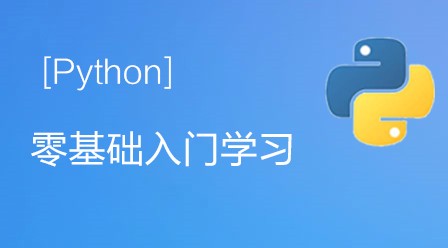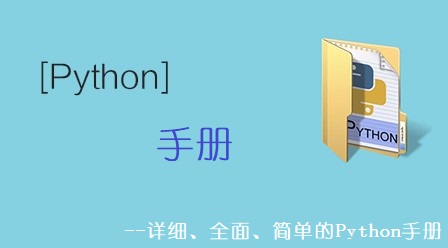
Python这些年风头一直很盛,占据了很多领域的位置,Web、大数据、人工智能、运维均有它的身影,甚至图形界面做的也很顺,乃至full-stack这个词语刚出来的时候,似乎就是为了描述它。
Python虽有GIL的问题导致多线程无法充分利用多核,但后来的multiprocess可以从多进程的角度来利用多核,甚至affinity可以绑定具体的CPU核,这个问题也算得到解决。虽基本为全栈语言,但有的时候为了效率,可能还是会去考虑和C语言混编。
混编是计算机里一个不可回避的话题,涉及的东西很多,技术、架构、团队情况、管理、客户等各个环节可能对其都有影响,混编这个问题我想到时候再开一贴专门讨论。本文只讲python和C混编的方式,大致有如下几种方式(本文背景是linux,其他平台可以类比):
共享库
使用C语言编译产生共享库,然后python使用ctype库里的cdll来打开共享库。
举例如下,C语言代码为
/* func.c */
int func(int a)
{
return a*a;
}python代码为
#!/usr/bin/env python #test_so.py from ctypes import cdll import os p = os.getcwd() + '/libfunc.so' f = cdll.LoadLibrary(p) print f.func(99)
测试如下:
$ gcc -fPIC -shared func.c -o libfunc.so $ ./test_so.py 9801
subprocess
C语言设计一个完整的可执行文件,然后python通过subprocess来执行该可执行文件,本质上是fork+execve。
举例如下,C语言代码为
/* test.c */
#include <stdio.h>
int func(int a)
{
return a*a;
}
int main(int argc, char **argv)
{
int x;
sscanf(argv[1], "%d", &x);
printf("%d\n", func(x));
return 0;
}Python代码为
#!/usr/bin/env python # test_subprocess.py import os import subprocess subprocess.call([os.getcwd()+'/a.out', '99'])
测试如下:
$ gcc test.c -o a.out $ ./test_subprocess.py 9801
C语言中运行python程序
C语言使用popen/system或者直接以系统调用级fork+exec来运行python程序也是一种混编的手段了。
举例如下,Python代码如下:
#!/usr/bin/env python # test.py import sys x = int(sys.argv[1]) print x*x
C语言代码如下:
/* test.c */
#include <stdio.h>
#include <stdlib.h>
int main()
{
FILE *f;
char s[1024];
int ret;
f = popen("./test.py 99", "r");
while((ret=fread(s,1,1024,f))>0) {
fwrite(s,1,ret,stdout);
}
fclose(f);
return 0;
}测试如下:
$ gcc test.c $ ./a.out 9801
python对C语言扩展的支持
很多编程语言都为C语言扩展添加了支持,这有两种原因:
(1)语言设计之初,可以充分的利用C语言已有的库来做很多扩展;
(2)C语言的运行效率高。
python也不例外,从诞生那天起,很多库都是C语言写的。python的C语言扩展中涉及到python的数据结构与C语言的对应,扩展方法其实是用C语言编写一个共享库,只是这个共享库中的接口是一个规范的,可以被python识别的。
为了说明如何扩展,我这里先假设一个在python下的函数功能,代码如下:
def func(*a):
res=1
for i in range(len(a)):
res *= sum(a[i])
return res如上,希望的函数功能是,参数是任意多个数字组成的列表(姑且排除其他数据结构),返回每个列表的元素之和的乘积。
姑且先把python代码写了,如下所示:
#!/usr/bin/env python
# test.py
import colin
def func(*a):
res=1
for i in range(len(a)):
res *= sum(a[i])
return res
a = [1,2,3]
b = [4,5,6]
c = [7,8]
d = [9]
e = [10,11,12,13,14]
f = colin.func2(99)
g = colin.func3(a,b,c,d,e)
h = func3(a,b,c,d,e)
print "f = ",f
print "g = ",g
print "h = ",h带上之前一直测试的平方func,这个实现相对简单,希望python写出来的func可以和C语言扩展出来的结果一致。
先用C语言写上这些函数的实现,其中func3用上了一个表示任意多个任意长的数组的数据结构y_t,而x_t用来表示单个数组。
/* colin.h */
#ifndef Colin_h
#define Colin_h
typedef struct {
int *a;
int len;
} x_t;
typedef struct {
x_t *ax;
int len;
} y_t;
int func2(int a);
int func3(y_t *p);
void free_y_t(y_t *p);
#endif
/* colin.c */
#include "colin.h"
#include <stdlib.h>
int func2(int a)
{
return a*a;
}
int func3(y_t *p)
{
int result;
int sum;
int i, j;
result = 1;
for(i=0;i<p->len;i++) {
sum = 0;
for(j=0;j<p->ax[i].len;j++)
sum += p->ax[i].a[j];
result *= sum;
}
return result;
}
void free_y_t(y_t *p)
{
int i;
for(i=0;i<p->len;i++) {
free(p->ax[i].a);
}
free(p->ax);
}上面定义了三个函数,func2代表平方,func3代表之前所说的功能,又因y_t这个结构可能都是动态分配出来的,所以给个归还内存的方法。
刚才说过python扩展的话,需要把这个共享库的接口“标准化”一下。于是我们就包装一下,并给个python加载的入口。
/* wrap.c */
#include <Python.h>
#include <stdlib.h>
#include "colin.h"
PyObject* wrap_func2(PyObject* self, PyObject* args)
{
int n, result;
/* 从参数列表中导出一个整形,用"i" */
if (!PyArg_ParseTuple(args, "i", &n))
return NULL;
/* 用C语言的库实现来计算 */
result = func2(n);
/* 计算结果必须要导成python识别的类型 */
return Py_BuildValue("i", result);
}
PyObject* wrap_func3(PyObject* self, PyObject* args)
{
int n, result;
int i, j;
int size, size2;
PyObject *p,*q;
y_t *y;
y = malloc(sizeof(y_t));
/* 先数数有多少个参数,也就是列表的个数 */
size = PyTuple_Size(args);
/* 把数组的个数先分配了 */
y->len = size;
y->ax = malloc(sizeof(x_t)*size);
/* 遍历python里各个列表(参数) */
for(i=0;i<size;i++) {
/* 先获得第i个参数,是一个列表 */
p = PyTuple_GetItem(args, i);
/* 获得列表的长度 */
size2 = PyList_Size(p);
/* 为数组分配好空间 */
y->ax[i].len = size2;
y->ax[i].a = malloc(sizeof(int)*size2);
/* 遍历列表,依次把列表里的数转到数组里 */
for(j=0;j<size2;j++) {
q = PyList_GetItem(p, j);
PyArg_Parse(q,"i",&y->ax[i].a[j]);
}
}
/* 用C语言的库实现来计算 */
result = func3(y);
free_y_t(y);
free(y);
/* 结果转成python识别格式 */
return Py_BuildValue("i", result);
}
/* 这是接口列表,加载时是只加载此列表的地址,所以这个数据结构不能放栈(局部变量)内,会被清掉 */
static PyMethodDef colinMethods[] =
{
{"func2", wrap_func2, METH_VARARGS, "Just a test"},
{"func3", wrap_func3, METH_VARARGS, "Just a test"},
{NULL, NULL, METH_NOARGS, NULL}
};
/* python加载的时候的接口 */
/* 注意,既然库名叫colin,此函数必须交initcolin */
void initcolin()
{
PyObject *m;
m = Py_InitModule("colin", colinMethods);
}过程中,我猜测PyArg_VaParse应该功能更为强大,可是反复测没有成功,也没细看文档。
测试一下
$ gcc -I /usr/include/python2.7/ -fPIC -shared colin.c wrap.c -o colin.so $ ./test.py f = 9801 g = 729000 h = 729000
可以看到,C语言写的函数和python写的函数结果一致。
众多python培训视频,尽在python学习网,欢迎在线学习!
本文转自:https://www.jianshu.com/p/9ffc1534e588










